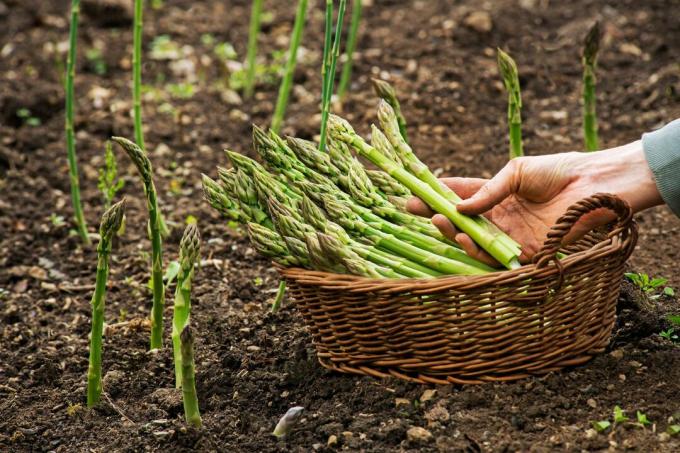Growing asparagus plants in your own garden is fun. However, there are some pests and diseases to watch out for. We show tips and tricks.

Pests on asparagus
Watch out for the asparagus fly, especially when planting new plants. From the moment they sprout until the end of June, the plants must be checked regularly for infestation. You can easily recognize the asparagus fly by its dark-light zigzag banding on the wings. While insecticides are usually used in professional asparagus cultivation, glue traps can be set up in the home garden. This is not only used to combat, but also makes control a lot easier. If the infestation is particularly high, appropriate pesticides can be used if necessary.

Asparagus chicken and the asparagus beetle can also be eaten asparagus cultivation spoil the fun. These antagonists of asparagus weaken the plant considerably by feeding on it. Unlike the asparagus fly, these pests can appear throughout the growing season. Pesticides against flies also help with chickens. If you discover the two beetles, you should search the plants carefully and collect the pests. The root fly (bean fly) is very rarely encountered in hobby cultivation. This lays her eggs in the earth dam at the end of April. After the maggots hatch from the eggs, these burrows feed on the growing asparagus sprouts. If the feeding is particularly bad, the sticks will discolour and wither away. A dry soil and no rotted parts of manure or compost in the soil prevent an infestation. If you grow asparagus under the foil, this is also a good preventive measure. Because there is no pesticide against the asparagus fly or its maggots.
Typical asparagus diseases
Here are particularly the asparagus rust, gray mold (botrytis) and Stemphylium worth mentioning. These fungal diseases are highly dependent on the weather and are favored by a rainy and humid summer. Pesticides in the form of fungicides can be used. However, the time of treatment must be immediately after the occurrence of the infestation. An infestation can occur, especially if the asparagus plants have not yet been harvested and the shoots are very dense in summer. In order to be able to do without sprays in your own garden, you should rely on robust varieties and a sufficient planting distance. Because dense planting not only promotes the spread of diseases, but also makes it more difficult for the leaves to dry off after rain showers. The asparagus leaves should always be cut off and disposed of in autumn to reduce infection in the following year. Unlike Stemphylium and Botrytis, which spread in damp weather, rust can also appear during warm, dry periods.
Manual weed removal
Only a few want herbicides in their own garden anyway. The asparagus also does not tolerate excessive use of these agents. Therefore, the asparagus bed should be thoroughly cleared of weeds, especially in spring. During the summer months, hooks can be used to keep regrowing weeds at bay between the rows and plants.
About the guest author:
As a graduate engineer in agricultural science Felix Grebhardt responsible for sales and marketing at Südwestdeutsche Saatzucht GmbH. The company is a family-run medium-sized plant breeding company based in Rastatt. Asparagus cultivation has a long tradition in the company and can be traced back to 1912. In addition to his job, Mr. Grebhardt passionately grows various types of kiwi, persimmon and figs in his garden.
Additional information: www.suedwestsaat.de/spargel
